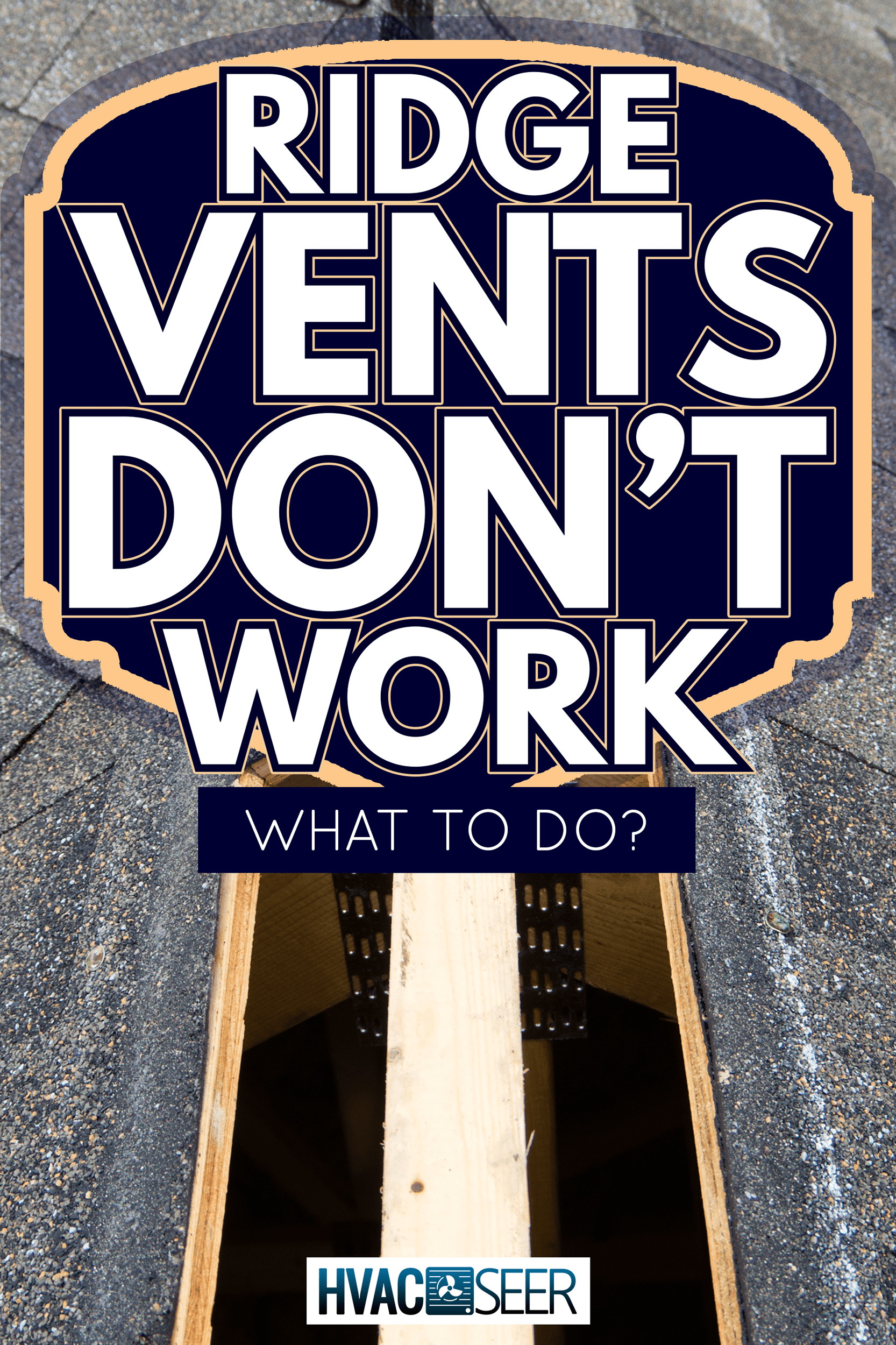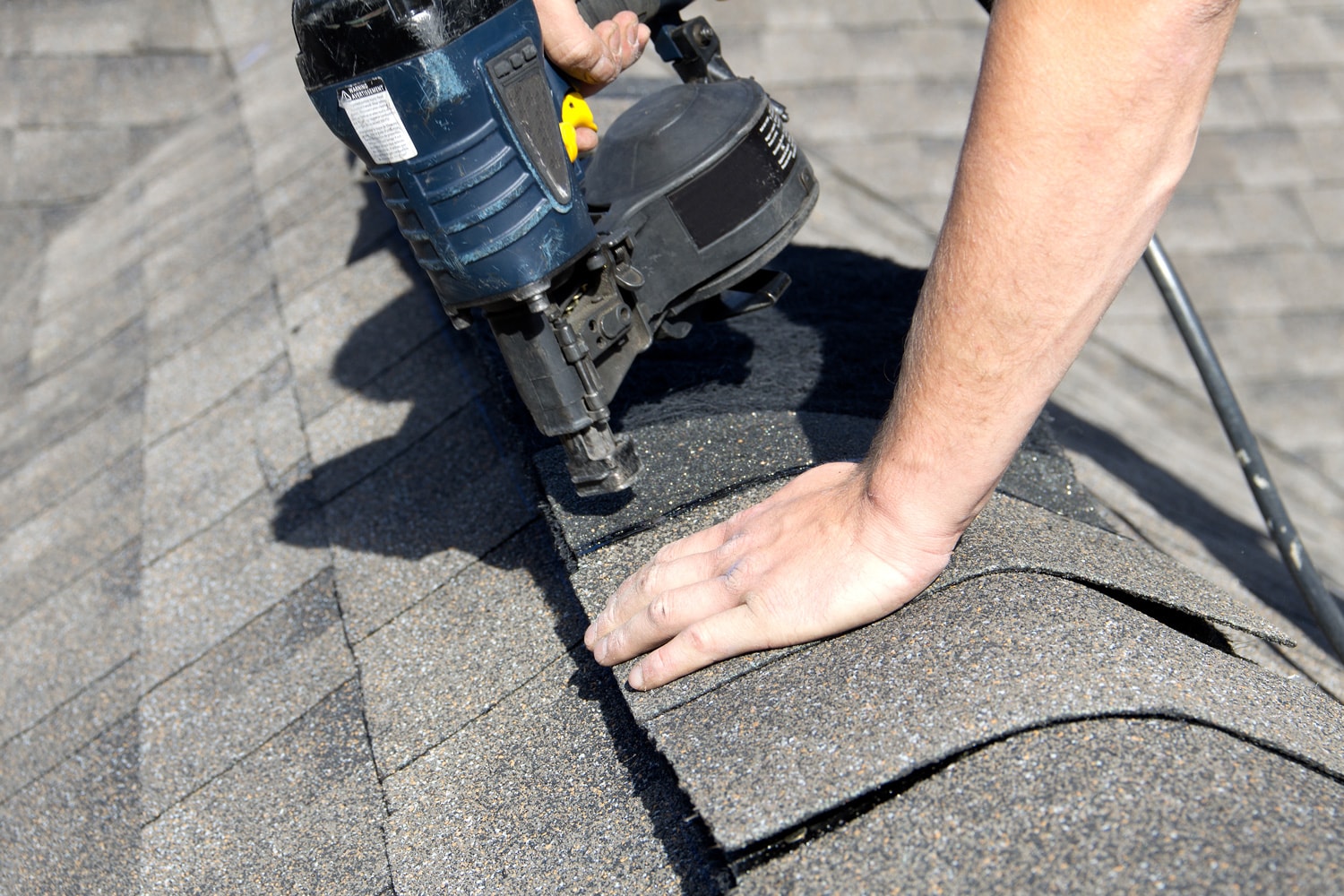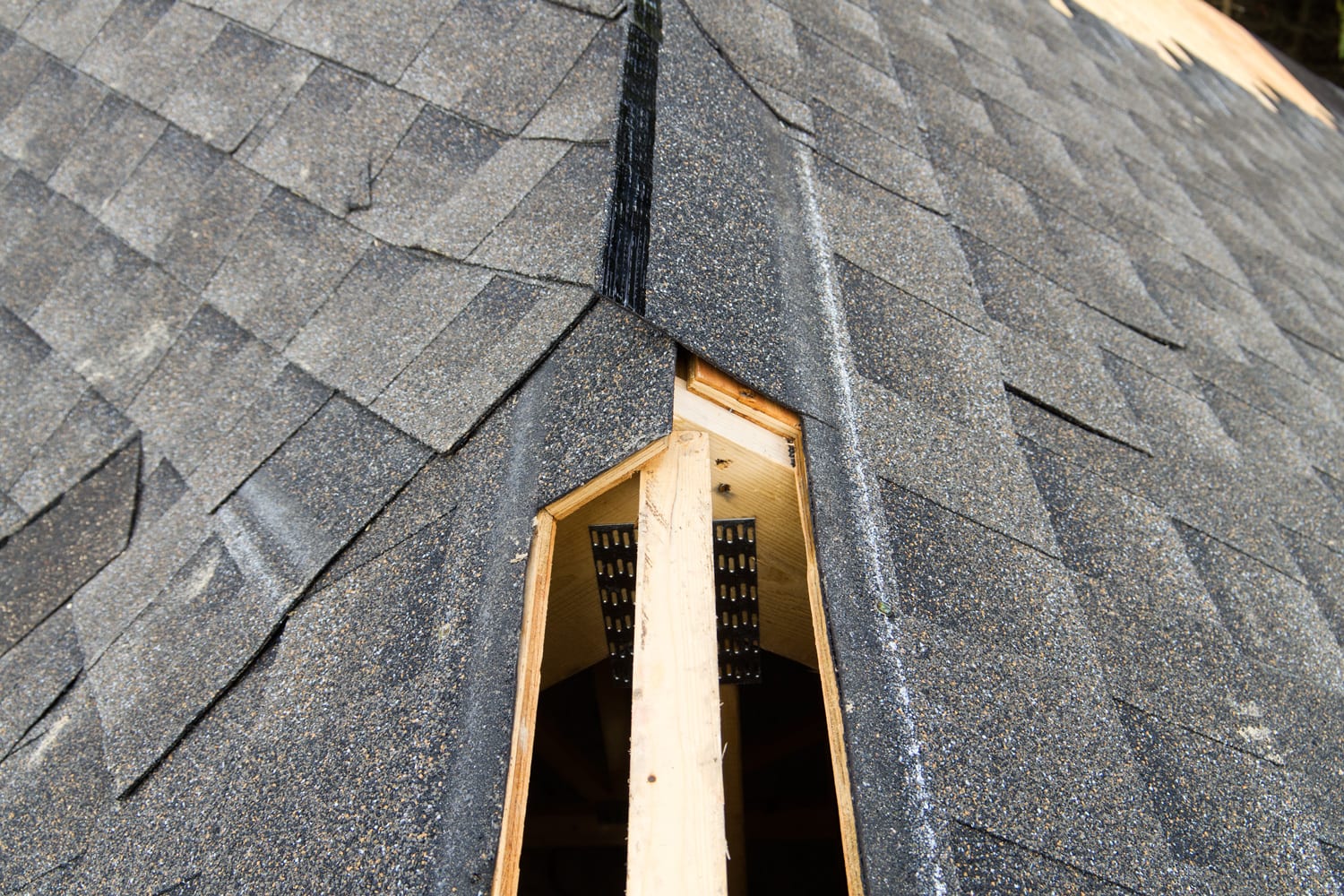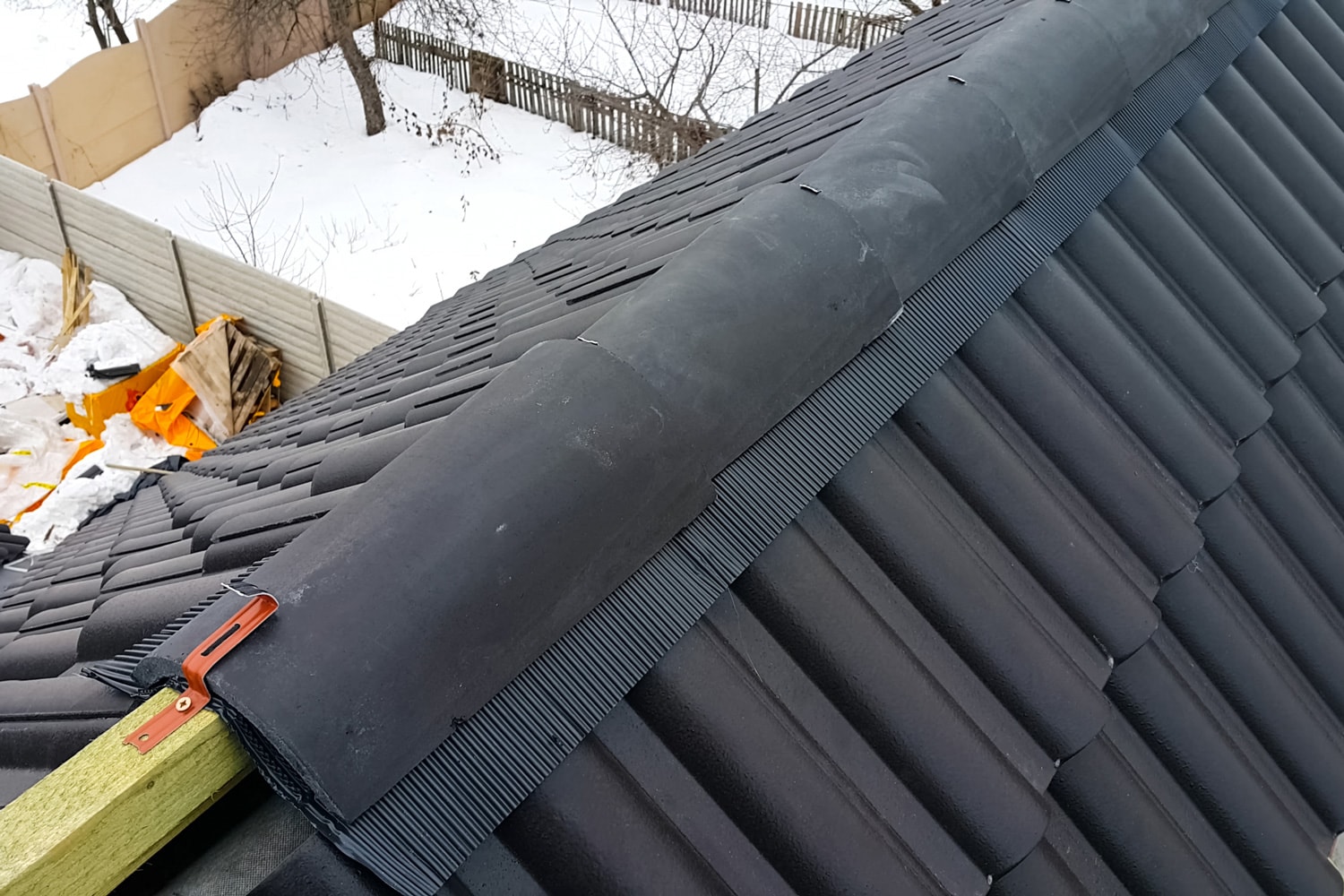Ridge vents are installed on the roof to help circulate air and regulate the amount of heat and moisture coming into the attic of your home. Ridge vents are an essential roofing component in modern homes. However, your ridge vent may stop working at some point. We asked roofing experts what to do in this scenario, and here's their reply.
A leaking vent is one of the many reasons your ridge vent is not working. This can happen as a result of poor installation or as a result of extreme weather conditions. When your ridge vent doesn't work, check if you have used the correct type of equipment during installation. You can change the nails and ensure the ridge vent overlaps correctly. Also, check if the ridge cap is in place as the wind could blow it off.
There are many reasons why your ridge vent is not working, so read on to learn why and what to do to get your home properly ventilated.

What Are Ridge Vents? [How Do They Work]

Different homes have different needs when it comes to ventilation. It is important to consider those needs when choosing the best kind of vents.
Ridge vents are a type of vent that runs the entire length of the peak of a roof. It is installed to expel warm air from the attic of a building. When warm air rises from an attic through convection and exits from the ridge vent, natural air outside the roof exchanges by allowing the warm air to escape.
At the same time, cool air is drawn from the soffit, transferring it to the attic. This natural cycle is an effective way of keeping the attic ventilated without using any energy. Ridge vents can help you reduce the risk of roof failure because trapped warm air can degrade your roof over time.
Why is Your Ridge Vent Not Working?
If you have noticed your ridge vent is not working and are curious to know why here are some of the most likely reasons.
1. Leak in the ridge vent
Many people may not notice that their ridge vent is leaking until it is too late. A storm or strong wind can lift the ridge cap causing leakage if they are not fastened well due to poor installation or intense weather.
2. Lack of soffit vents
Ridge vents and Soffit work together to keep air circulating in an attic. It is not recommended to install a ridge vent without a soffit because there is likely to be heat loss during winter. This heat loss occurs when the air is drawn into the house from its exterior does not match the air in the attic.
3. Clogging
This problem occurs due to dirt, debris, and different types of residue carried by the wind.
4. Attic fan near the ridge vent
An Attic fan will counteract the effect of the ridge vent by sucking in and expelling air without regulating the attic's temperature. It is an active ventilator, whereas a ridge vent is a passive ventilator. Installing both can lead to a counter effect.
What to Do When Ridge Vents Don't Work?

When your ridge vent isn't working, you should consider the following:
- Check the ridge installation and ensure the fasteners are strong to avoid leakage. You may have to replace them.
- Fix any ridge cap issue. Install a new one if the ridge vent cap has been removed by wind and ensure it is screwed in safely.
- Install matching soffit vent to bring fresh air into the attic
- Clean the ridge vent at least twice a year to avoid clogging.
- Do not install an attic fan near the ridge vent.
- Call a professional if your efforts prove futile
How to Install Ridge Vents

Installing a ridge vent is pretty simple but first, ensure that the attic is properly ventilated. Once you have confirmed this, the following steps can be followed.
1. Remove Shingle Caps
First, the nails that hold the cap shingles must be removed, starting with the last overlapping cap. Most ridge caps would have nails on both sides of the ridge to keep them secured.
2. Remove Wood Sheathing
Remove the wood sheathing along the roof ridge to allow airflow through the opening and the ridge vent. Cutting lines on the roof can be marked with the help of a chalk line. With the help of a hammer and pry bar, remove all framing nails running the length of chalk lines.
3. Install the Ridge Vent
Place the vent along the reference line and nail it to the decking on both sides, as directed by the manufacturer. Using the recommended nails, install an asphalt shingle cap over the vent
You may wonder whether a ridge vent should extend the entire length of the roof. It depends on you; the vent cap can be installed by the edge before the ridge vent.
Pros and Cons of Ridge Vents

Are ridge vents worth it? Well, here are some benefits and limitations.
Pros
Some of the reasons you should consider getting a ridge vent installed in your house are
- It assists in stabilizing the temperature of the house.
- It can serve as a complementing design to your house.
- It helps prevent bees, wraps, and rodents from entering the attic.
- It can increase the lifespan of cap shingles.
Cons
Some ridge vent problems may include:
- They can cause leakage during heavy downpours.
- They are not suitable for flat roofs.
- The cost of installation can be quite high.
- Ridge vents may not be the best option if you live in a warm climate
How Can I Improve My Ridge Vent Ventilation?
To improve your ridge vent ventilation, you should consider an additional venting system. Using just a ridge vent may not be sufficient ventilation.
Adding a soffit and gable vent will provide equal incoming and outgoing air levels. A gable vent placed at the gable end of the roof exhausts air from the attic.

How Effective Are Ridge Vents?
Other roof vents provide some level of ventilation, but experts would still recommend ridge vents because they are more efficient and more cost-effective. So, if you are installing a new roof, adding ridge vents can be effective.
Different Roof and Attic Vent Options
There are two types of ventilation systems in an attic
1. Active vents
An active ventilation system is designed to draw fresh air from the surroundings while expelling the air inside the attic. Examples of this ventilation system are:
Whirlybirds
Whirlybirds are also called turbine vents, invented by British Inventor Samuel Ewart in the 1900s. It consisted of aluminum blades inside an aluminum covering, which rotate using wind to drag in the air from outside the house and then expel the air inside the attic out of the house.
However, they are outdated and may not be the best way to ventilate a home. Some contractors also find it less aesthetically pleasing than other attic vent options.
Attic power vent
Attic power vents come in a circular shape and are mounted on the house roof. They are low profile and run using electricity to send hot air out of the attic space. Although they are effective, they incur high electricity costs.
Solar Power
As the name implies, the sun is used as a power source for the solar power vent. These vents eliminate almost 100% of electricity costs. But when the panel is charging, the vent switches off.
Because of the power required by the motor, the panel will not retain the amount of charge that can power the vent for an entire day.
Ridge vent with baffle
This ridge vent is spread across the length of the roof without being visible from the ground. Although they are popular, the disadvantage is that it lacks a filter for rodents, rain, and debris from entering. Ridge vents with a baffle that offer a means for the flow of air is an active vent
2. Passive vents
A passive ventilation system allows attic air to circulate naturally. It does not depend on the vent to ensure trapped air escapes. Examples are:
Static vent
Static vents resemble a small box on the roof. Because of this, it is sometimes referred to as a box vent. The box allows warm air to leave the roof by convection. Therefore, as the temperature in the attic rises, the warm air is forced out of the vents.
To Wrap Up
While attic ventilation is often overlooked, proper ventilation can improve air circulation in your home. Ridge vents are a popular choice for attic insulation because they allow for proper airflow, which reduces condensation and heat and keeps your home more comfortable.
To read more about attic ventilation, check out these related posts:
